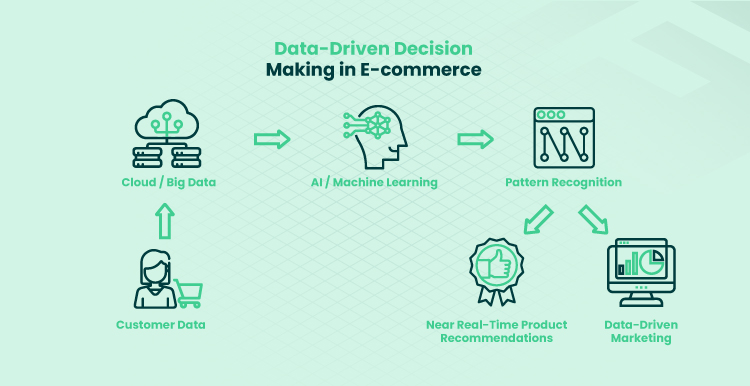- Have any questions?
- +91 96020 93137
- +91 93525 62080
- info@worldseoservices.com
Data-Driven Decision Making: The Key to Effective Healthcare Marketing

Healthcare Branding in the Digital Age: Strategies for Success
October 9, 2023
Telehealth Transformation: Leveraging Digital Marketing for Healthcare Providers
October 12, 2023In the ever-evolving world of healthcare marketing, staying ahead of the curve is no easy feat. The landscape is constantly shifting, patient expectations are rising, and competition is fierce.
In this dynamic environment, making informed decisions is not just a preference; it’s a necessity. That’s where data-driven decision-making comes into play.
In this blog, we’ll delve into the power of data-driven decision-making and how it can transform your healthcare marketing strategies.
Let’s get started.
Understanding the Data-Driven Approach
What Is Data-Driven Decision Making?
Data-driven decision-making, often abbreviated as DDDM, is a methodology that relies on data analysis and interpretation to guide business decisions. It’s like having a compass in a dense forest; it provides direction and helps you avoid potential pitfalls. In the context of healthcare marketing, DDDM involves collecting and analyzing data related to patient behavior, market trends, and campaign performance.
Why Is It Crucial in Healthcare Marketing?
Healthcare marketing isn’t just about promoting services; it’s about improving patient outcomes and delivering valuable information. This is where data-driven decision-making shines. By harnessing data, healthcare marketers can:
1. Understand Patient Needs
Data can reveal what patients are searching for, their preferences, and their pain points. This insight allows healthcare providers to tailor their messaging and services to meet these needs effectively.
2. Optimize Marketing Campaigns
DDDM enables marketers to track the performance of various marketing channels and campaigns. By identifying what works and what doesn’t, resources can be allocated efficiently to maximize ROI.
3. Enhance Patient Engagement
Personalization is key in healthcare marketing. With data, you can segment your audience and deliver content and messages that resonate with specific patient groups, leading to higher engagement and trust.
4. Predict Trends
Data analysis can uncover emerging healthcare trends. By staying ahead of these trends, healthcare providers can position themselves as industry leaders and innovators.
The Role of Data in Healthcare Marketing
Imagine data as the building blocks of your healthcare marketing strategy. Each piece of information is a brick, and together, they construct a robust foundation for success.
Patient Data: Your Most Valuable Asset
Patient data, including demographics, medical history, and online behavior, is a treasure trove for healthcare marketers. It helps create patient personas, allowing you to tailor your marketing efforts precisely.
For instance, if your data indicates that a significant portion of your audience is interested in preventive care, you can develop content and campaigns that cater to this interest.
Competitive Intelligence: Staying Ahead of the Game
Analyzing data on your competitors can be a game-changer. By identifying their strengths and weaknesses, you can refine your marketing strategy to gain a competitive edge. If a rival clinic is excelling in pediatric care, you might decide to focus on adult and senior services instead.
Performance Metrics: Measuring Success
In the digital age, healthcare marketing can be tracked with precision. Metrics such as website traffic, conversion rates, and click-through rates provide valuable insights. A spike in website visits following a specific campaign can indicate its success, while a high bounce rate might signal a need for improvements.
Implementing Data-Driven Decision Making
Transitioning to a data-driven healthcare marketing strategy isn’t as complex as it might seem. Here’s a step-by-step guide to help you get started:
1. Data Collection
Start by gathering relevant data. This can include website analytics, patient feedback, and market research. Invest in tools and software that can streamline data collection and storage while ensuring compliance with privacy regulations like HIPAA.
2. Data Analysis
Once you have data in hand, it’s time to dig deep. Use data analysis tools to identify patterns, trends, and correlations. For instance, you might discover that a blog post on heart health attracts more engagement during February, Heart Health Month. Armed with this insight, you can plan future content accordingly.
3. Set Clear Goals
Establish concrete objectives for your healthcare marketing efforts. Do you want to increase patient appointments by 20% in the next quarter? Or perhaps you aim to become a trusted source of health information in your community. Define your goals, and ensure they are SMART—specific, measurable, achievable, relevant, and time-bound.
4. Create Actionable Insights
Data alone isn’t enough. Turn your findings into actionable insights. If data suggests that your social media campaigns are driving more engagement than email newsletters, reallocate resources accordingly. Adapt and evolve your strategy as you go.
5. Regular Evaluation
Data-driven decision-making is an ongoing process. Regularly evaluate your strategies and tactics. What worked last year might not work this year due to shifts in patient behavior or market dynamics. Stay nimble and ready to pivot when necessary.
Challenges and Considerations
While data-driven decision-making offers tremendous benefits, it’s not without its challenges. Here are some key considerations:
Data Security
Protecting patient data is paramount. Ensure that you have robust security measures in place to safeguard sensitive information and comply with relevant regulations.
Data Quality
The accuracy of your data is crucial. Inaccurate or incomplete data can lead to flawed insights and misguided decisions. Implement data quality checks and validation processes.
Interpreting Data
Data analysis can be complex. Consider investing in training or hiring professionals who specialize in data analysis to ensure you’re extracting meaningful insights.
Conclusion
In the ever-evolving landscape of healthcare marketing, data-driven decision making is the compass that guides you through uncharted territories. By understanding the power of data, leveraging patient insights, and continuously optimizing your strategies, you can stay ahead of the curve and make a meaningful impact on patient engagement and outcomes.
Remember, the journey to data-driven excellence takes time and dedication. Embrace the challenges, learn from your data, and let it illuminate your path toward effective healthcare marketing.
In the end, it’s not just about marketing; it’s about enhancing lives and making a positive impact in the world of healthcare.
So, what are you waiting for? Dive into the world of data-driven decision-making and let it transform your healthcare marketing endeavors.
Your patients and your brand, including “World SEO Service,” will thank you for it, even if only indirectly, through improved engagement and outcomes. Also Read- Healthcare Branding in the Digital Age: Strategies for Success


